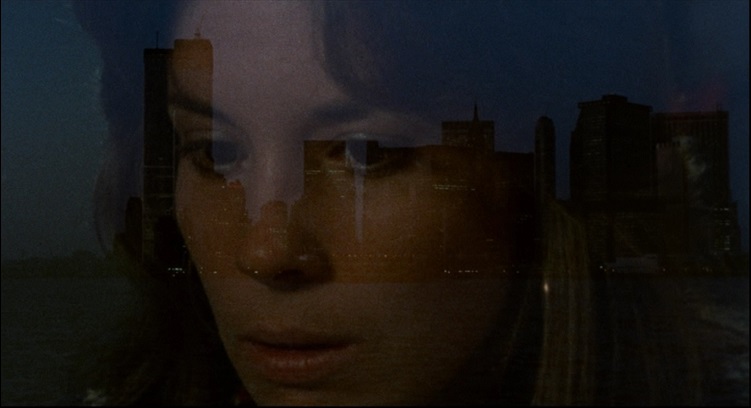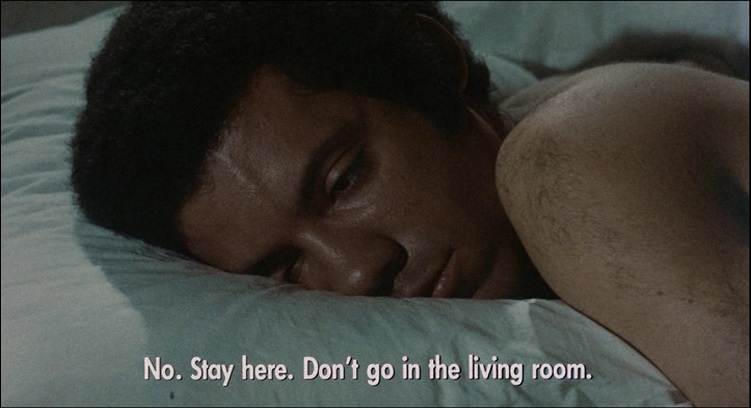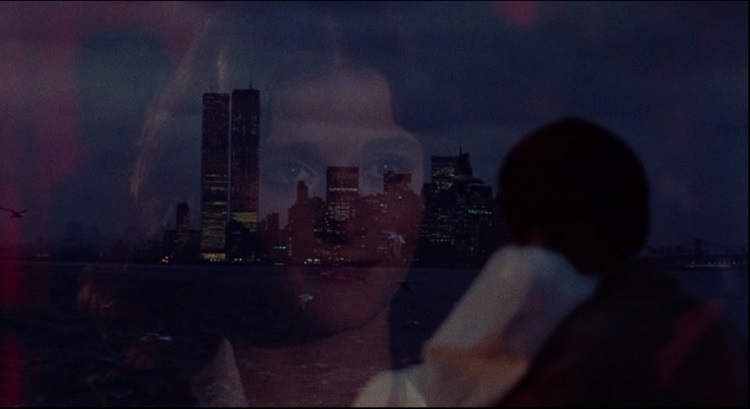The nigh-perfect score is by Bernard Herrmann, who was probably the biggest item in producer Pressman’s budget. Sisters launches with a gripping title sequence consisting of a progression of macro-photographed fetuses set to Herrman’s crashing horns and screaming Moog synthesizers. One could put that music to pictures of baby kittens, and we’d know they were Kittens from Hell. Herrmann’s prestige keeps the Roe-vs-Wade baby monsters from becoming exploitative: the disturbing opening makes the neutral one-word title instantly sinister. We’re prepared for anything. Out here in Los Angeles, Sisters ‘premiered’ in November 1972’s Los Angeles Film Exposition (FILMEX), and was acquired one month later by American International. I saw parts of it at FILMEX while working as an usher (talk about immediately recognizing music by a specific composer!) and later saw a preview screening in Westwood. Some of the filmmakers were in the lobby afterwards, and I almost walked into a wall when I caught sight of Margot Kidder, who was losing no opportunity for self-promotion.
Variety reviews could usually be relied upon to point out fresh creativity, even in exploitation films. For this show they weren’t as enthusiastic, noting the gory details but minimizing Sisters’ appeal as an ‘okay shocker for the action market.’ The reviewer rather grudgingly noted the filmic references to The Master of Suspense, adding that the ‘Hitchcock-style music’ smooths over the film’s rough edges.
I can’t imagine a 1973 film student not being energized by De Palma’s movie — many of us were in film school because we were inspired by reading about Alfred Hitchcock. As a card-carrying Hitchcock- obsessed film student, I went home and scribbled down a list of Hitchcock allusions, plot points, themes, shots, setups, etc. The only previous movie that I’m aware was consciously constructed of Hitchcock homage material is Riccardo Freda’s L’orribile Segreto del Dr. Hichcock (The Horrible Dr. Hichcock). It wasn’t until much later that I realized Sisters was also a veritable travelogue of witty references to classic horror films that I hadn’t yet seen: Peeping Tom, The Cabinet of Dr. Caligari, etc.
Here’s the rundown of what I once rudely called ‘Hitchcock Rip-Offs.’
They’re Big Spoilers, so see the film first if you have an analytical memory:
Rear Window: A murder seen by an ‘amateur’ is doubted by a police professional. Actions are observed and investigated with binoculars between apartment buildings. Durning’s detective Durning waves, ‘ain’t found nothin’ yet’ from afar.
Psycho: The major prop introduction of the butcher knives. The unexpected knife killing of a likeable character in whom we’ve invested our emotions. The murder clean-up shown in detail. A private detective that disappears from the film mid-case. The revelation that ‘Dominique died on the operating table’ (= ‘Who’s that buried up in Greenlawn Cemetary?’). Various subjective/objective walks, especially the walk leading to the mystery asylum. A trucking-zoom into the pupil of an eye. The psychiatrist blurting out essential exposition for uncomprehending audiences. Kidder’s double identity and the entire Norman Bates personality transference theme. ‘Special guest transferences’: one between psycho killer and psychiatrist, and another between killer and investigator.
Spellbound: The Dali-like dream nightmare (granted, in style it is more akin to a Fellini nightmare).
Suspicion: Philip’s walk with the cake mirrors the walk with the poisoned milk.
The Birds: The pastry clerks (including Olympia Dukakis!) argue behind the counter, just like the hardware proprietor in Bodega Bay. The ‘huh’ ending features an innocuous-sinister exterior landscape with telephone poles.
Lots of Hitch films: Grace’s troublesome Mother, arguing with the cops (calling the police always leads nowhere).
Yes, the ‘borrowed’ situations do stack up. But this is not a lifeless copycat movie. De Palma mounts several inspired set piece sequences that are wholly his own, not merely witty or clever. The Life Magazine newsreel story on the twins provides very effective exposition. But Sisters is best remembered for two killer scenes, the asylum nightmare and the split screen murder.
Enthusiastically received and much discussed was De Palma’s split-screen experiment during and after the opening murder sequence. Hitchcock never tried a split-screen sequence. He had tried many gimmicks in his long career — claustrophobic staging, ultra-long takes, subjective flashbacks, 3-D. But by the time the multiscreen movie at the 1966 World’s Fair made big news, Hitchcock was no longer tinkering with such experimentation. At the time we thought De Palma had been inspired by Richard Fleischer’s 1968 The Boston Strangler, but De Palma’s own Murder à la Mod, released first, uses the technique as well; it also featured actor William Finley.
As was also seen in parts of the Fleischer film, De Palma’s split-screen replaces standard parallel cutting: he simultaneously shows both halves of actions that would normally be intercut one with another. The suspense of the murderers cleaning away traces of the crime while investigators dawdle only a few feet away is very effective. Audiences I saw Sisters with applauded the double-vision synchronous hide ‘n seek game near the elevators.
Grace’s witnessing of the actual murder is equally effective, but brings up a glaring inconsistency, a big Hitchcock no-no cheat. Grace is shown calmly walking to her window perhaps thirty seconds after the actual murder takes place. Seeing a bloody hand writing ‘help’ on a window, she recoils in alarm, indicating that she was unaware of any problem before. And what can she (we) see? She can barely tell that the man is black. The rest of her view, which we see on one half of the split screen, is obstructed by the reflection of a brick wall on the glass. Yet Grace tells the cops she witnessed a murder, knows it was a stabbing, even describes the assailant, who never came anywhere near the window to be identified. It’s a very cute confusion – on first viewing the murder is so shocking and the events so riveting that Savant just took Grace at her word. Maybe it’s another Hitchcock reference — to the ‘lying flashback’ in Stage Fright.
Brian De Palma’s second bravura sequence is the B&W nightmare, an almost perfect horror vision visually unlike anything in Hitchcock. Assembled as a master tracking shot through a fantastic horror scene, it’s stylistically more akin to Federico Fellini. It also has a purpose, to impress on Grace’s mind a traumatic false reality, ‘Manchurian Candidate-style.’ The zoom into the eye of the drugged Grace was probably inspired by Repulsion; it also has the ‘diamond bullet to the brain’ effect of 2001. Inside the mind’s eye is a convincingly warped B&W Dali-scape of elements and characters we’ve seen earlier on, plus a menagerie of grotesques.
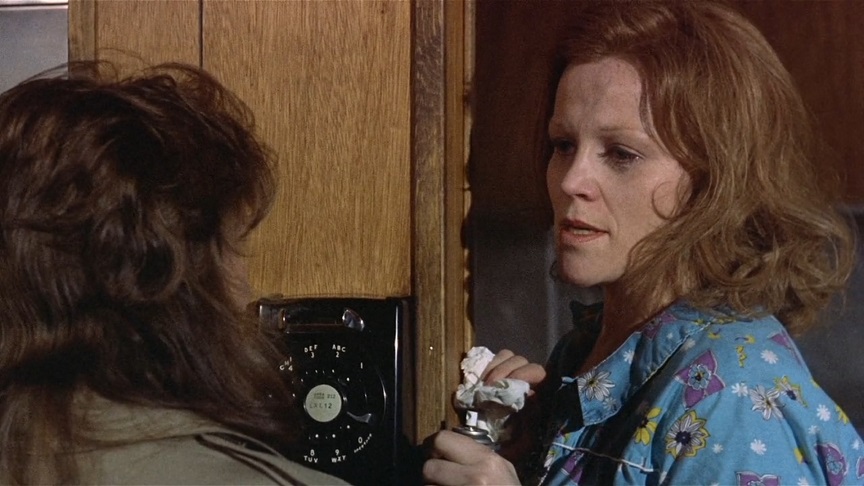




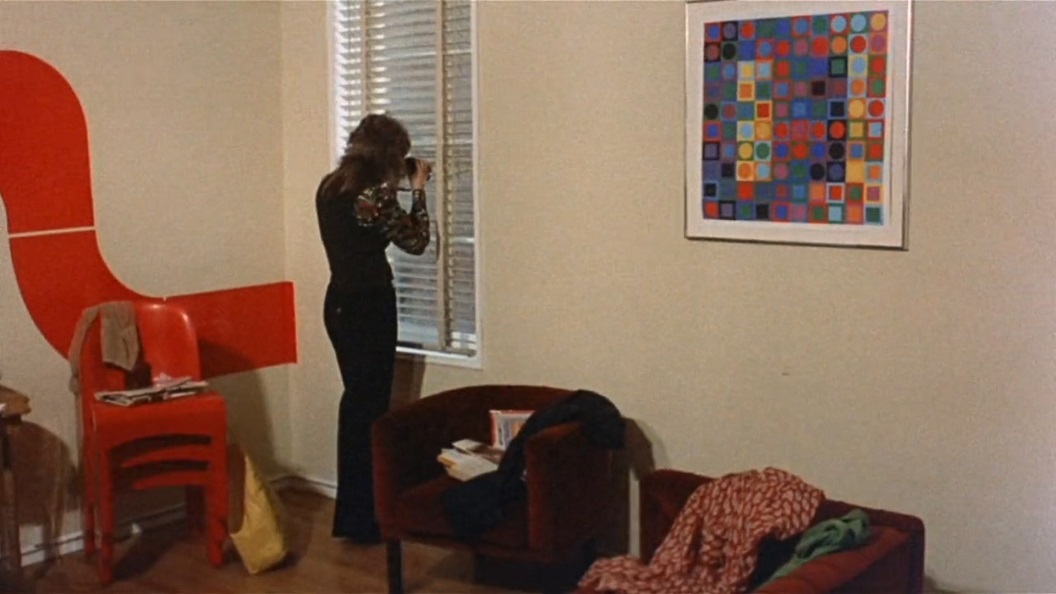


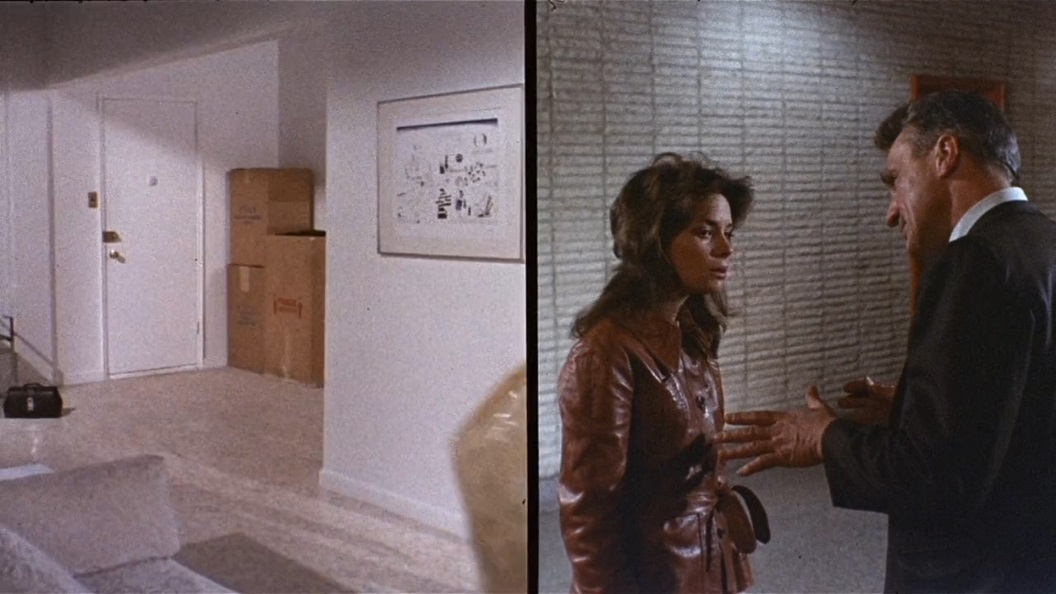













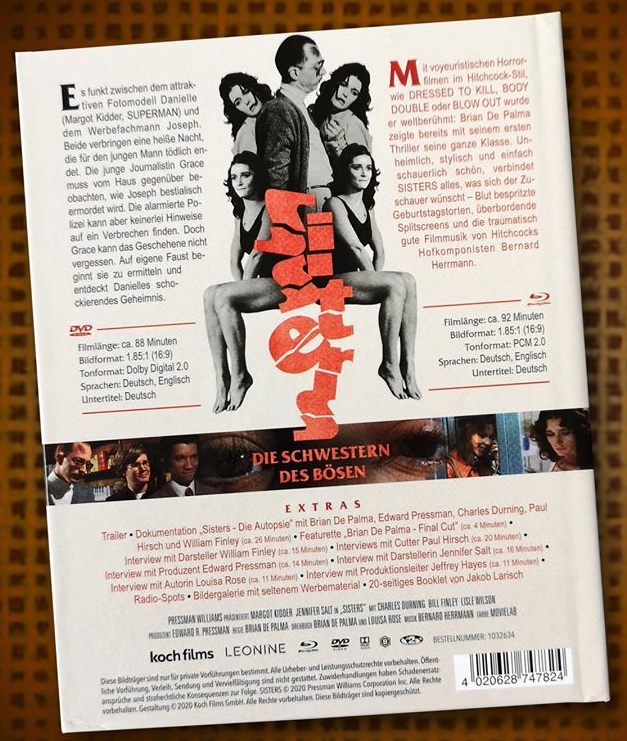

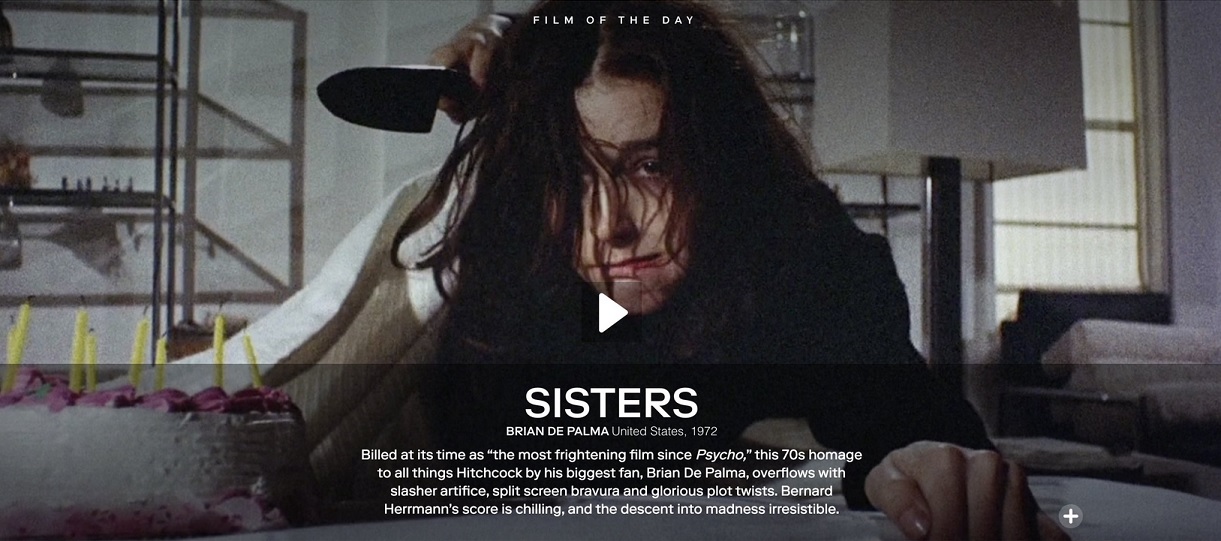
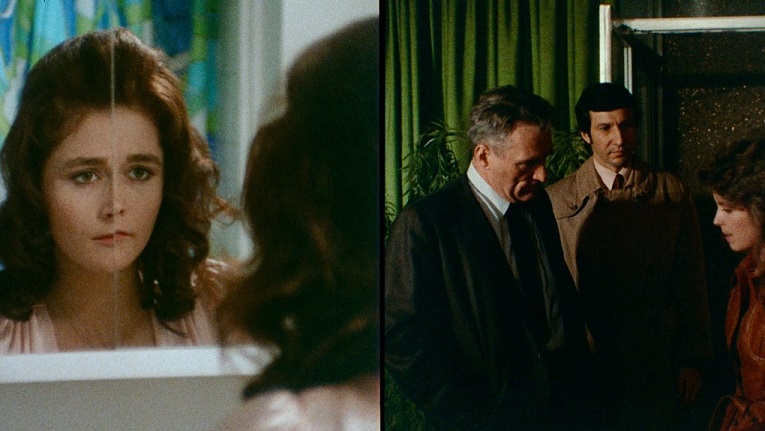
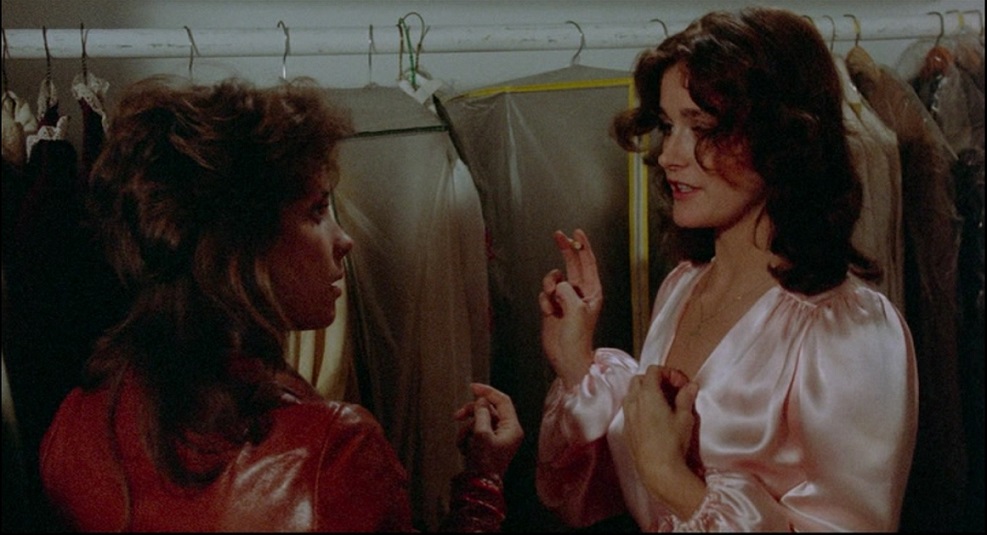

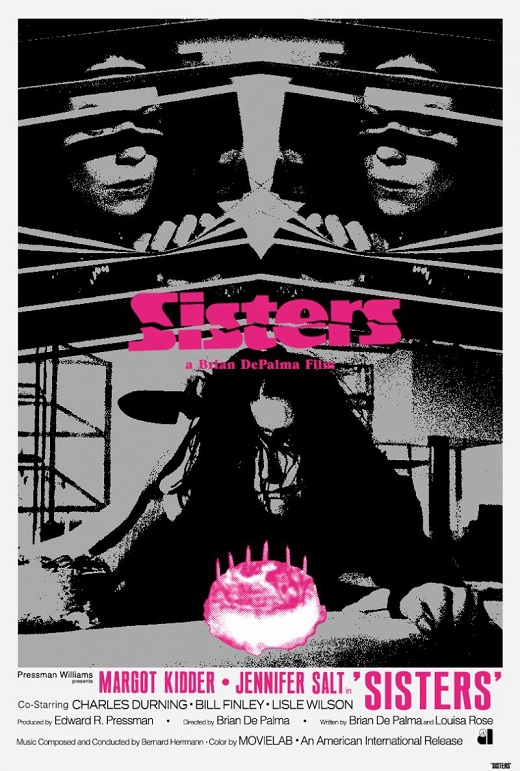 "The movie might not get many midnight showings,"
"The movie might not get many midnight showings," 